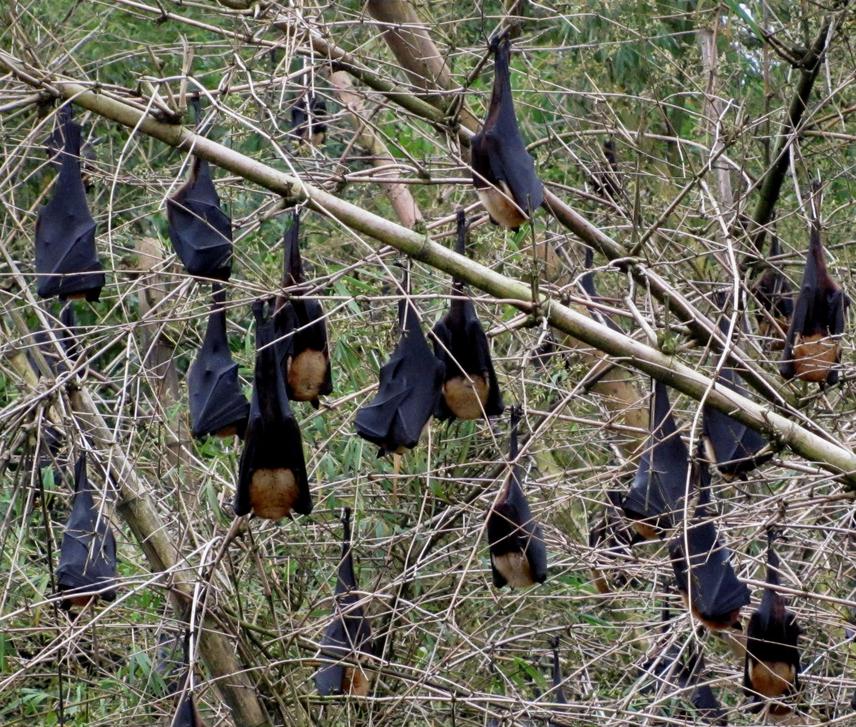Kadambari Deshpande
Other projects
8 Jul 2020
Under the Bats’ Wing: Assessing Irreplaceability and Future Relevance of Insectivorous Bat Ecosystem Services to Inform Conservation Across Landscape Contexts
This study aims to identify key ecological factors influencing bat distribution and habitat use across a gradient of land-use types, and in relation to anthropogenic threats to their conservation in the southern Western Ghats.

A roost of the Indian Flying Fox, the largest bats around us. © Kadambari Deshpande
India’s Western Ghats, a global biodiversity hotspot, is home to many species of bats including some endemics (e.g., Latidens salimalii). Being mostly elusive and cryptic species, the general public and even wildlife managers, especially in India, are often unaware of the ecological importance of bats, and thus mostly indifferent and ignorant towards their conservation. Despite their important ecological and functional roles as insect-pest predators and seed-dispersers, biodiversity conservation programs or impact assessments rarely consider bats in evaluating biodiversity value.
Ecological research on bats in India has been rather limited, with little reliable information on their ecology and conservation status available from most areas. Recent surveys in the Western Ghats identified the presence of major gaps in scientific knowledge and local awareness about bat ecology, their importance and conservation need. These gaps have caused widespread neglect of bats in ecological studies, wildlife habitat management, and environmental impact assessments. Lack of detailed ecological information on most bat species found here makes it difficult to understand and address their conservation needs. Bats are sensitive to local disturbance (e.g., loss of forest structure by logging) and landscape-level habitat modification (e.g., forest conversion to plantations).
Specifically, this project will estimate effects of ecological and anthropogenic factors on bat distributions, habitat use across a gradient of land-use types with respect to human disturbance. Identification of major threats to bat populations will help assess their conservation needs. The project aims to compile baseline data on bat community structure, diversity and distribution in this landscape. Quantitative information on habitat uses by bats, their distribution patterns, local and landscape-level threats to bat populations will help assess the effects of habitat modification as well as anthropogenic disturbance on bats and will inform the development of appropriate, site-specific conservation strategies.